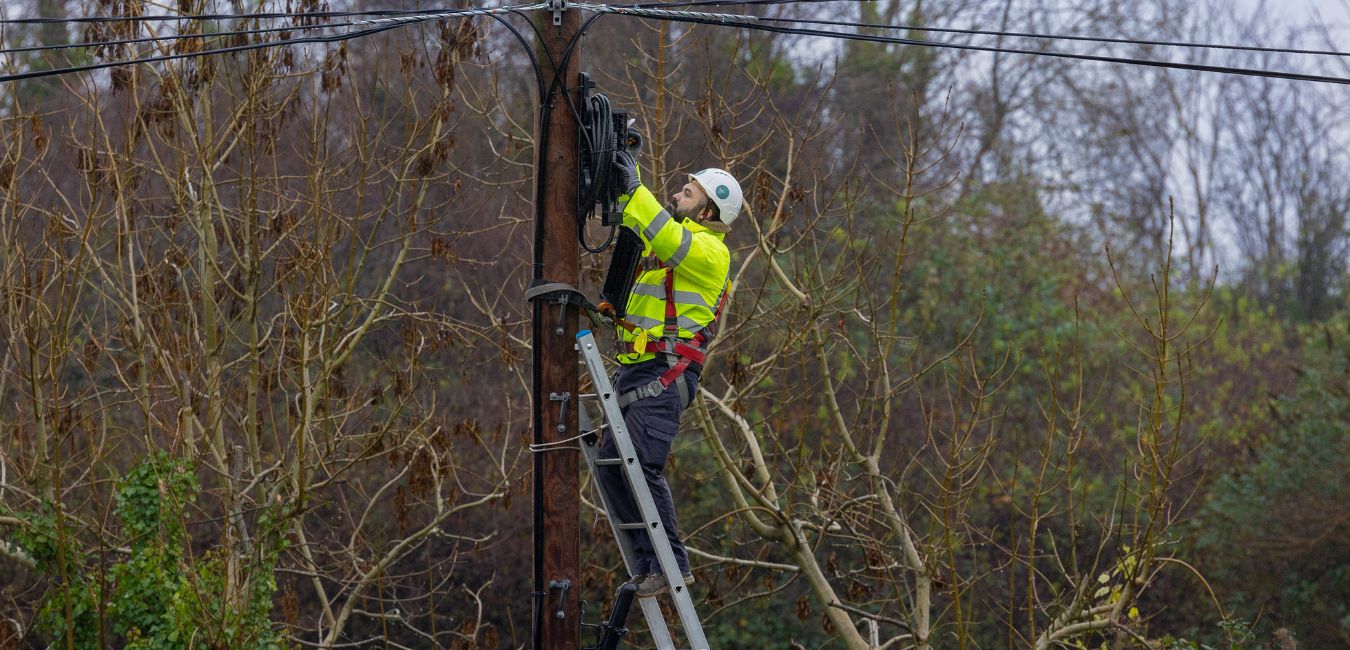Are you shopping around for a new broadband plan, but aren’t sure where to start? You may have also heard rumours that traditional ‘copper’ broadband is being phased out but don’t know exactly what that means. Don’t worry, you’re not alone! At National Broadband Ireland, we’re here to help break down the broadband jargon and explain things, well – a little more clearly.
The massive – and exciting – task we’re undertaking involves us deploying what is called ‘fibre technology’ to a designated Irish rollout area, accounting for 1.1million people. It’s an ambitious but incredibly rewarding task, meaning that when we’re done, over half a million Irish homes, farms, schools and businesses will have access to high-speed fibre broadband. Eventually, traditional broadband (which uses copper wire) will be switched off. We don’t have a definite date for when that will happen, but it makes sense to be prepared by exploring fibre now. Here’s everything you need to know…
What is Copper Broadband?
Copper wire is one of the most common ways a supplier currently provides customers with broadband. To install the system, they bring these copper wires into your home. Each wire uses electrical signals to carry data waves and in turn, connect you to the worldwide web. It’s still very much available as a broadband service, but it will eventually be switched off (likely before 2030). Like terrestrial TV, it’s been a great option for customers over the years. However, innovations in technology mean that faster fibre broadband will be more widely available – hence the work we’re doing to lay down the infrastructure all across Ireland.
What is Fibre Broadband?
Fibre optic cables are made of glass and wrapped in cladding. This system uses LED or laser pulses to send a light signal to your device. In this way, it can transmit data over longer distances than cable’s electrical signals, without degrading the signal.
What Makes Fibre a Better Option?
Fibre doesn’t work off electrical signals like copper, so it’s immune to electromagnetic interference (caused by appliances like boilers or water heaters) and resulting in slowdowns or dropout of service. It’s also a lot faster, thanks to the fact that it’s sending data through pulses of light… literally the speed of light! NBI’s network in Ireland is currently capable of delivering speeds of 5 Gb, with the ability to move to an incredible 10GB in coming years. Fibre can carry much more bandwidth too, meaning you’re less likely to experience buffering issues during crucial streaming moments!
Exploring Your Options
The main Irish broadband service suppliers offer both options, and many customers are still happily signing up for copper. However, given its time limit, it’s worth thinking ahead. Plus, it’s hard to argue with the stats when it comes to fibre! This innovative system will, in coming years, have a capacity to be ten times faster than traditional and fixed wireless broadband. It’s also more resilient to the elements, meaning you’ll enjoy a reliable connection for your home or business. Check out a few providers’ current offers online to get a sense of available speeds in your area. If you’re interested in full fibre but aren’t sure if your town or village is part of our rollout area, check out our handy interactive map! Plus, you can enter your details here to be kept up to date as the rollout progresses across the country.

